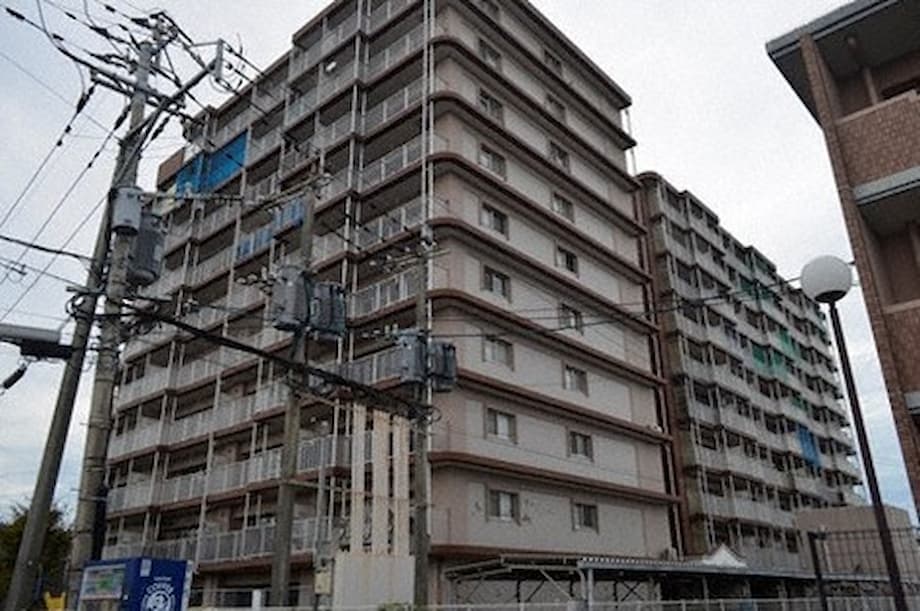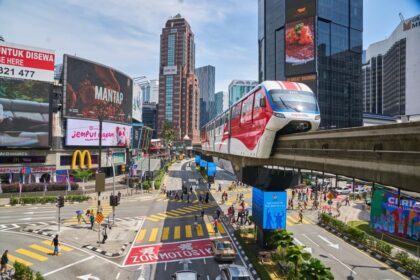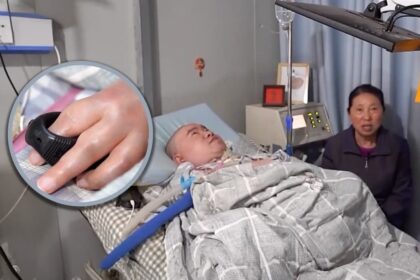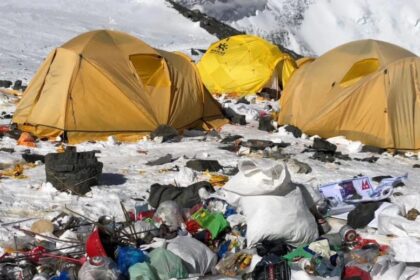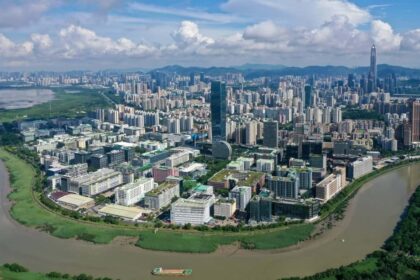Who should use evacuation shelters and when home sheltering makes sense
Residents of reinforced concrete apartments in Japan often hear that they should stay home during disasters and avoid evacuation shelters. Some people have come to believe that apartments are so strong that shelters are off limits unless a building collapses. That is a misunderstanding. Evacuation centers exist for people who are at risk or cannot keep living at home safely. When a home is undamaged and the area is not facing a secondary hazard, authorities expect many residents to shelter at home to keep shelters available for those who need them most.
- Who should use evacuation shelters and when home sheltering makes sense
- How Japan’s building standards shape safety
- When should apartment residents evacuate to a shelter
- Assessing your building after a quake
- Organize your management association now
- Know your building’s seismic status
- What to stock at home and to bring to shelters
- Lessons from recent disasters and international context
- How shelters operate in practice
- What to Know
This approach is about priority, not exclusion. The idea is similar to priority seating on trains. People who need help get first access, while others make space when they can. If your building is damaged, if you are in a hazard zone, or if your household includes older adults or people who require medical support, using a shelter is appropriate. The right choice depends on the building’s condition, the neighborhood risk, and guidance from the local government as the situation evolves.
Masaki Tanaka, an expert in apartment disaster preparedness, has worked with residents who faced this choice after major earthquakes. He cautions that broad statements on municipal websites can be misread. Local pages may promote home sheltering for reinforced concrete apartments, but this is not a blanket rule. Tanaka stresses that eligibility is based on need and safety, not building type, and that residents should not hesitate to go to a shelter if their home is unsafe.
How Japan’s building standards shape safety
Japan’s construction rules change after lessons from large earthquakes. The most important shift for apartments came in 1981, when the New Anti Seismic Design Standard came into force. Buildings certified from that year onward follow stricter requirements. The goal is to limit damage in moderate shaking and prevent collapse in very strong shaking measured on the Japan Meteorological Agency seismic intensity scale.
What changed in 1981
Older rules focused on preventing collapse at around intensity 5 plus. The 1981 standard raised the bar. Under the newer approach, a conforming building should show only minor damage at intensity 5 plus, and should avoid collapse even at intensity 6 plus to 7. Many reinforced concrete apartments built after 1981 have performed better in recent earthquakes than older stock. That said, any building can become unsafe if structural members are damaged. After the 2016 Kumamoto earthquakes, engineers found apartment columns that had bent or lost capacity, creating a real risk even in relatively modern frames.
Grades and structural systems
Japan also uses a Seismic Grade system that rates expected performance. Grade 1 meets the basic code, Grade 2 is stronger by a factor of about 1.25 and is required for evacuation centers, and Grade 3 is stronger by a factor of about 1.5 and is used for critical facilities such as fire stations. Structural approaches vary by height and design:
- Earthquake resistant structures are the standard approach that relies on strength and ductility to absorb shaking.
- Damping systems add devices or walls that absorb energy and reduce shaking felt by the frame.
- Seismic isolation places bearings or sliders between the building and the ground to limit shaking transmission, common in taller buildings.
Design quality matters, but so does age, maintenance, and ground conditions. An older apartment on soft ground with deferred maintenance can face higher risk than a newer one on firm ground that has been well maintained.
When should apartment residents evacuate to a shelter
Deciding whether to stay or go can be stressful in the first hours after a disaster. Safety comes first. If any of the following conditions apply, leaving for an evacuation center or a safer location is warranted. Follow municipal announcements and instructions on the day, since hazards such as aftershocks, fires, and flooding can change conditions quickly.
Earthquake specific triggers
- Visible structural damage to columns, beams, or walls, such as wide diagonal cracks, concrete spalling with exposed rebar, or a column that appears out of plumb.
- Doors and windows jam across many units on the same floor after shaking, a possible sign of frame distortion.
- Noticeable leaning of the building, large uneven settlement, or open gaps at joints between walls and floors.
- Fallen or cracked stair flights that prevent safe exit. Never rely on elevators after shaking.
- Strong aftershocks expected and your unit already shows significant damage or heavy nonstructural hazards such as broken glass across escape routes.
- Your building was built before 1981 and has not been retrofitted, and you observe damage that raises doubt about continued safety.
Flood, tsunami, and landslide risks
- Official tsunami warning, advisory, or evacuation order. Move to higher ground immediately, do not stay in a coastal apartment if you are in a tsunami inundation zone.
- River or flash flood warnings for your area, especially if the building entrance or parking is below street level or if you rely on basement equipment for power or pumps.
- Landslide warnings if the apartment is near a slope, cliff, or in mapped landslide hazard zones.
Fire, gas, and lifelines
- Gas leaks, smoke, or fire in the building or nearby structures that could spread.
- Extended outage of power and water with no prospect of restoration, especially for higher floors where carrying water becomes impractical.
- Medical needs that require stable power, refrigeration, or professional support that you cannot receive at home.
Assessing your building after a quake
Start with a personal safety check. Wear sturdy shoes and gloves, check for gas leaks by smell, shut off the main valve if you suspect a leak, and avoid using candles or open flames. Do not use elevators until the building has been checked. If you need to move through dark common areas, proceed carefully on stairs and avoid leaning on damaged railings. Communicate with neighbors and your management association to share observations and decide on next steps.
Engineers in Japan use standard methods to evaluate damage and the remaining capacity of reinforced concrete buildings after earthquakes. Rapid field checks are designed to be conservative. That means the first judgment can err on the side of caution, especially when members have yielded. A professional evaluation looks at the type and pattern of cracking, any residual drift, and the condition of load bearing elements. Only a qualified inspector or structural engineer can declare a building safe for continued use, restricted use, or unsafe. If the frame shows diagonal cracking in columns, crushed concrete at column ends, or a story that appears weaker than the ones above, the safest choice is to evacuate and seek an official inspection.
Document damage with photos and note unit numbers and locations. Report your findings to the property manager and the local government help line. If inspectors are busy, rely on common sense. Occupants should not remain in areas with falling hazards such as heavy ceiling boards, cracked exterior tiles that can detach, or unstable parapets. Move to lower stories only if they are verified safe and evacuation routes remain clear.
Organize your management association now
Decisions are easier when neighbors have discussed them in advance. Apartment management associations can set practical thresholds for evacuation and home sheltering, and they can prepare systems that protect everyone, including older residents. Work with local authorities and, when possible, consult a structural engineer before a crisis to tailor criteria to your building’s design and age.
- Create a disaster plan that defines who will check common areas, who will contact the municipality, and where residents will assemble after shaking.
- Compile an emergency contact list and note residents who may need extra assistance.
- Plan regular drills for earthquakes and floods. Include stairwell practice and a night time scenario.
- Stock communal supplies such as water, portable toilets, blankets, tarps, tools, and battery lighting in a secure room that is easy to access after shaking.
- Label shutoff valves and electrical panels. Post simple instructions with diagrams at those locations.
- Agree on temporary rules, such as a no elevator policy until inspections are complete and an order for floor by floor checks.
- Set up a communication board in the lobby and a messaging method that does not rely on one platform.
Support for older and vulnerable residents
Many apartment complexes have aging populations. Involve care managers and family members in planning. Assign volunteer buddies to households that might need help. Place chairs or benches at stair landings to assist people who need rest during evacuation. Identify residents with medical devices that need power and discuss how to support them if an outage lasts beyond a day.
Know your building’s seismic status
Look up the building’s certification date. If it is before 1981, ask whether a seismic evaluation or retrofit has been done. Engineers can calculate a seismic index that reflects strength and ductility, taking into account irregularities and deterioration. This index helps determine whether a retrofit makes sense. Common strengthening methods for reinforced concrete include adding new concrete walls, installing steel braces, and jacketing columns. Some landmark buildings have installed seismic isolation systems that decouple the structure from ground shaking. Data from past earthquakes shows that retrofitted buildings tend to suffer less damage.
For many condominiums, money and governance drive what is possible. Maintenance funds can be tight in older buildings and resident boards can be cautious about large projects. Even so, targeted repairs and partial upgrades can raise safety. After an earthquake, basic repairs can restore much of a building’s performance. Epoxy crack injection, replacement of damaged concrete, and reinforcement repairs have allowed tested structures to recover stiffness and strength. A plan that starts with evaluation, identifies priority work, and sets a savings schedule gives residents a clear path to a safer building.
What to stock at home and to bring to shelters
Home sheltering works best when families are ready to be self sufficient for several days. Keep items in a closet or by the entry in sturdy containers. Prepare a separate go bag that you can carry to a shelter on short notice.
Home shelter kit
- Water for at least three days, with extra for cooking and sanitation. Store smaller bottles for easy lifting to higher floors.
- Ready to eat food, can opener, portable stove with fuel, and utensils.
- Flashlights and headlamps with spare batteries, portable radio, and power banks.
- First aid supplies, prescription medicines, spare glasses, and contact lens items.
- Portable toilet kits, heavy duty bags, wet wipes, sanitizer, and towels.
- Work gloves, masks, helmets, and sturdy shoes for each family member.
- Blankets, warm clothing, rain gear, and compact sleeping mats.
- Copies of identification, a list of contacts, printed maps, and cash in small bills.
- Tools and supplies such as duct tape, rope, multi tool, and a whistle.
Evacuation go bag
- Water, high energy snacks, and a cup or bottle.
- Lightweight blanket or sleeping bag, thin mat, and a compact pillow.
- Personal hygiene items and a small towel.
- Medications, assistive devices, and a concise medical summary.
- Charging cables, power bank, and a small radio.
- Face masks, gloves, and hand sanitizer.
- ID copies, residence information, and a marker and tape to label your space.
- Items for children, older adults, or pets as needed, including diapers or pet carriers.
Lessons from recent disasters and international context
Events in Japan show how reinforced concrete apartments can both protect lives and, at times, require evacuation. After the 2016 Kumamoto earthquakes, some apartment columns suffered serious deformation. Residents in those buildings needed to move out even if floors and walls looked mostly intact. That experience reinforced a key message for apartment dwellers: do not judge safety only by interior damage in your own unit. What matters most is the condition of the structure and the behavior of escape routes.
Japan’s progress on codes and retrofits has reduced damage in many recent earthquakes. Engineers have shown that repaired reinforced concrete frames can recover most of their seismic performance. International comparisons highlight why standards, enforcement, and community preparedness matter. Countries with weaker codes and less enforcement tend to see more building damage and longer recovery. Japan’s focus on strong rules, frequent drills, and neighborhood planning has helped residents make safer choices during crises.
How shelters operate in practice
Evacuation centers in Japan are usually public schools or community halls run by municipalities with support from volunteers. Space is limited and privacy is modest, which is why many residents prefer to stay home if it is safe. People using shelters are expected to bring essentials if possible, including bedding, masks, and any special items for health or childcare. Some centers accept pets in designated areas, but this varies by municipality. Check local policies during your pre disaster planning.
Priority goes to those who cannot live at home because of damage, hazard exposure, health needs, or lack of lifelines. Reinforced concrete apartment residents are not excluded. Tanaka, the apartment preparedness specialist, explained how to think about this policy and why it matters for fairness and safety.
“The notion that reinforced concrete apartment residents can’t use evacuation centers is incorrect. Evacuation centers are for victims at risk or unable to live at home. People in undamaged homes, in safe areas, are generally expected to shelter at home if they can, but centers are not off limits.”
What to Know
- Reinforced concrete apartment residents can use evacuation centers when their homes are unsafe or they are at risk.
- Home sheltering is encouraged when apartments are undamaged and the area faces no secondary hazards.
- Buildings certified from 1981 follow stronger seismic rules aimed at limiting damage and preventing collapse.
- Signs to evacuate include damaged columns or beams, jammed doors across multiple units, fire or gas leaks, tsunami or flood warnings, and long outages.
- Do not use elevators after shaking and avoid areas with falling hazards.
- Only qualified inspectors can judge a building safe for continued use after a quake.
- Management associations should set evacuation criteria, keep contact lists, run drills, and stock communal supplies.
- Seismic evaluation and retrofits such as added walls, steel braces, or column jacketing can raise safety, especially in older buildings.
- Prepare a home kit for several days and a go bag for quick evacuation to a shelter.
- Follow municipal instructions during disasters and adjust plans as conditions change.


